Guimarães is a treasure of Portugal, a city of unique historical value, located in the northern part of the country. Its historic center has been designated a UNESCO World Heritage Site, so many tourists come to visit and admire its magnificent monuments.
As the birthplace of Portugal’s first king, Afonso I the Conqueror, it has significant historical value. Wandering the cobblestone streets of Guimarães, visitors are immediately captivated by its medieval atmosphere.
The city’s landmark is the impressive Guimarães Castle. Nearby is the Palace of the Dukes of Braga, which combines Gothic and Romanesque architectural elements. Besides its monuments, Guimarães attracts visitors with numerous cultural events, such as the Gualterianas Festival and other festivals.

Location
Guimarães is located in the Minho region, on the north-west of Portugal. The district of Braga.
Guimarães Castle

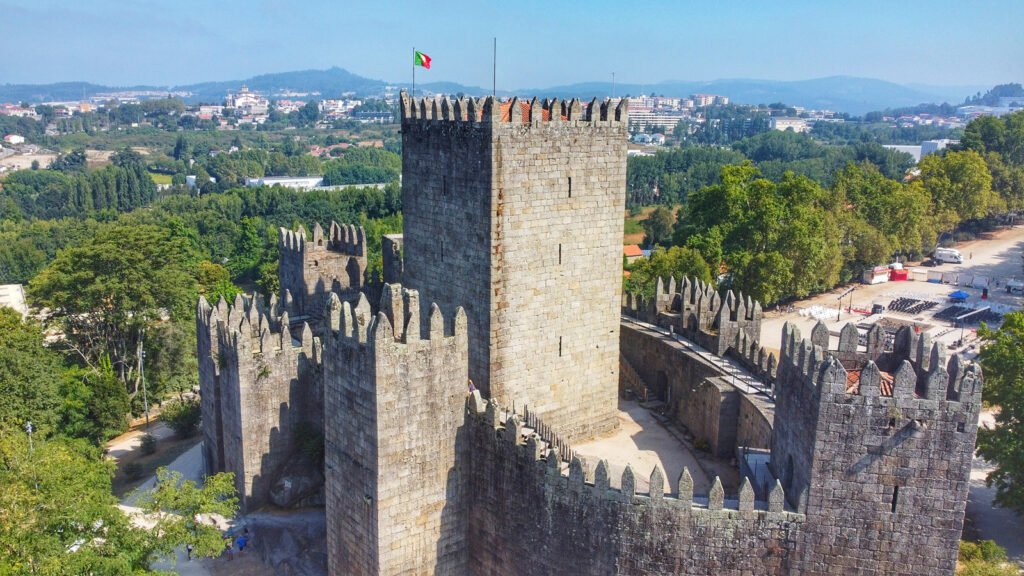
Guimarães Castle in Guimarães is one of the main tourist attractions in this UNESCO World Heritage city. The original fortress on the site was constructed in the 10th century by Mumadona Dias.
The castle is a military fortification grounded primarily in the late Romanesque period, and elaborated during the early Gothic epoch of Portuguese architecture. Its area is delineated by walls forming a pentagram, similar to a shield, that includes eight rectangular towers, military square and central keep.
Palace of the Dukes of Bragança
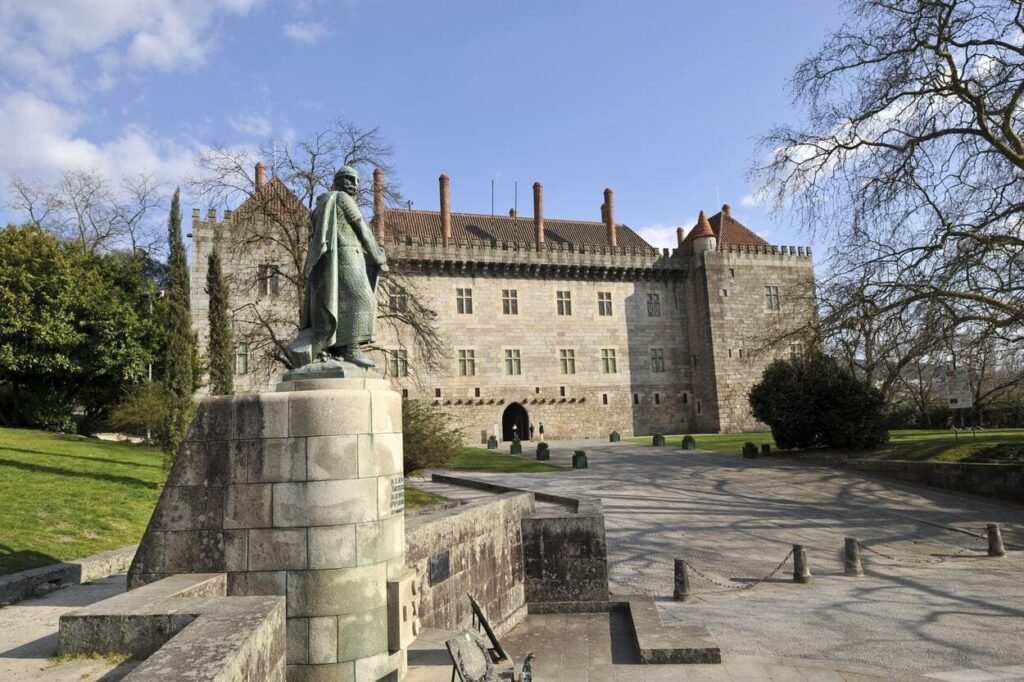
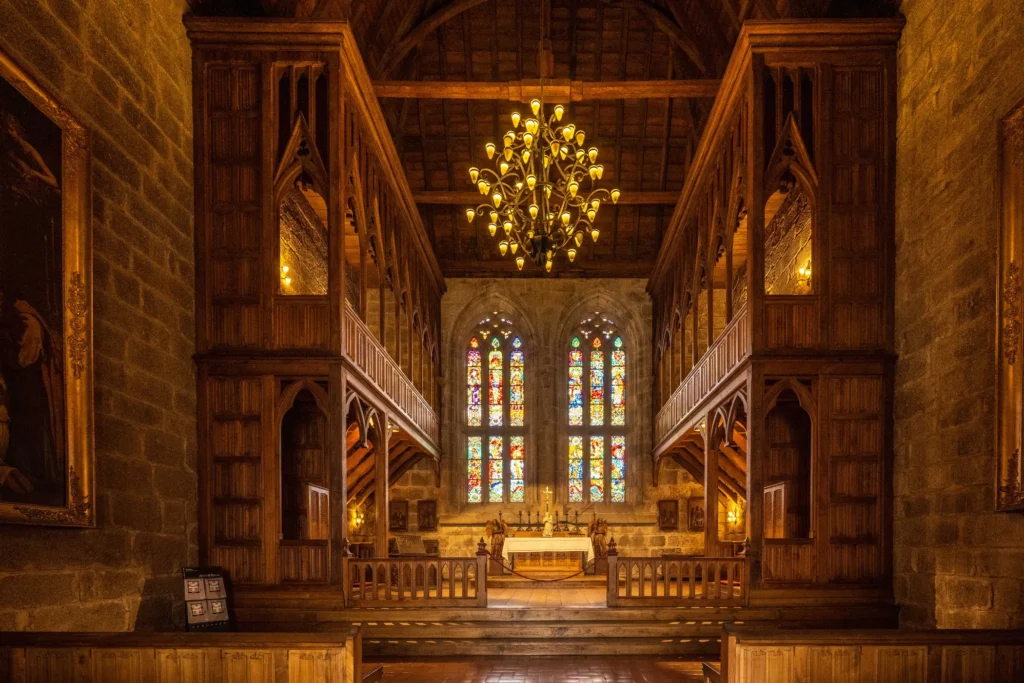
The Palace of Duques de Bragança is located above the historic center of the city of Guimarães, in the North of Portugal. Its construction dates back to the VX century and in the 12th century Guimaraes also witnessed the birth of Portugal’s first king. Its towers and cylindrical chimneys stand out from almost any point of view of the historic center.
When visiting the Palace you can see many of its rooms and observe their Flemish tapestries and ancient weapons (15th and 16th centuries). And still inside the Palace, you can admire a chapel with stunning stained glass windows.
Guimarães Historical City Centre
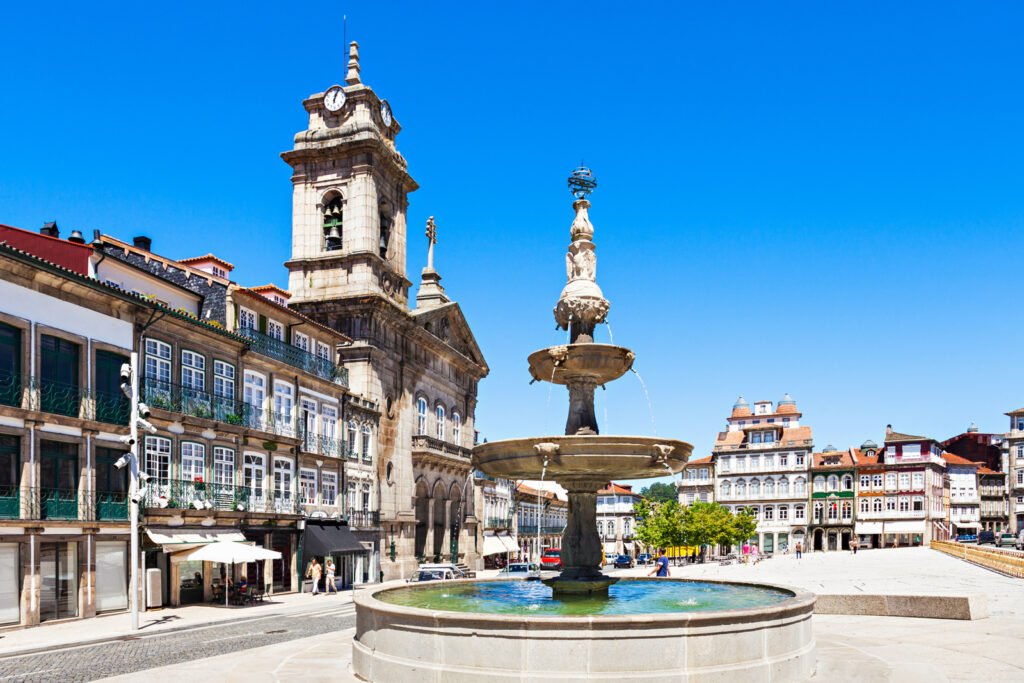

It is historic centre, a listed UNESCO World Heritage Site with captivating monuments, museums and colourful azulejos tiles. The historic center is characterized by significant landmarks such as the Guimaraes Castle and the Palace of the Dukes of Braganza. Visitors can explore the rich history and culture of the area, with numerous museums, churches, and traditional Portuguese houses.
Largo da Oliveira
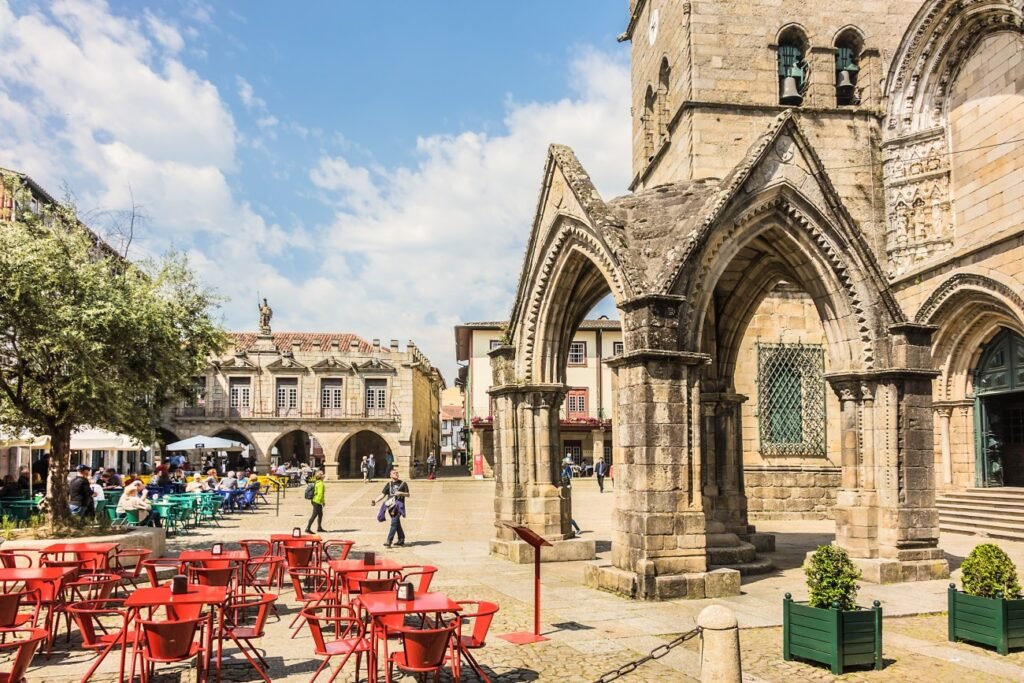
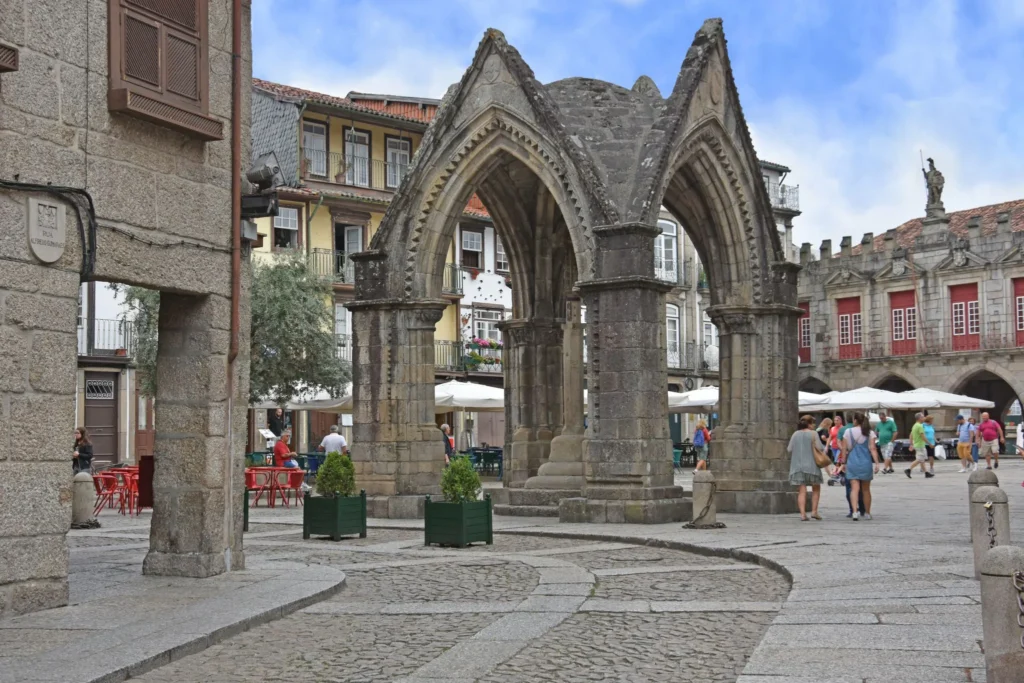
Largo da Oliveira owes its name to the ancient olive tree planted here. Today, it serves as a meeting point for locals and tourists, overlooking historic buildings and houses with traditional facades and balconies adorned with colorful flower boxes. Urban furniture was created for this space, framed in the new iron architecture: gazebo, urinal, benches and lamps.
Igreja de Nossa Senhora da Oliveira
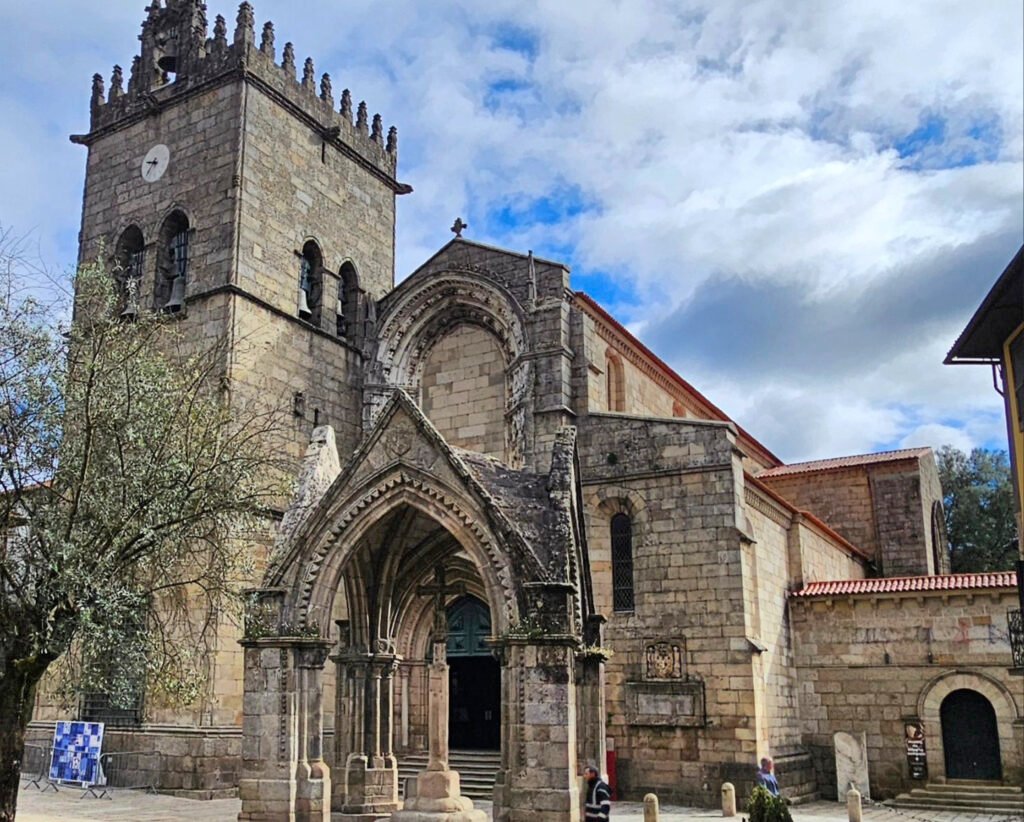

The church features Romanesque architecture with Gothic elements and a bell tower dating from 1513. The church houses a collection of medieval religious artifacts, including original architectural elements in the adjacent Alberto Sampaio Museum. The Church of Our Lady of Oliveira is a must-see for any traveler wishing to immerse themselves in Portugal’s rich heritage.
Aqui Nasceu Portugal
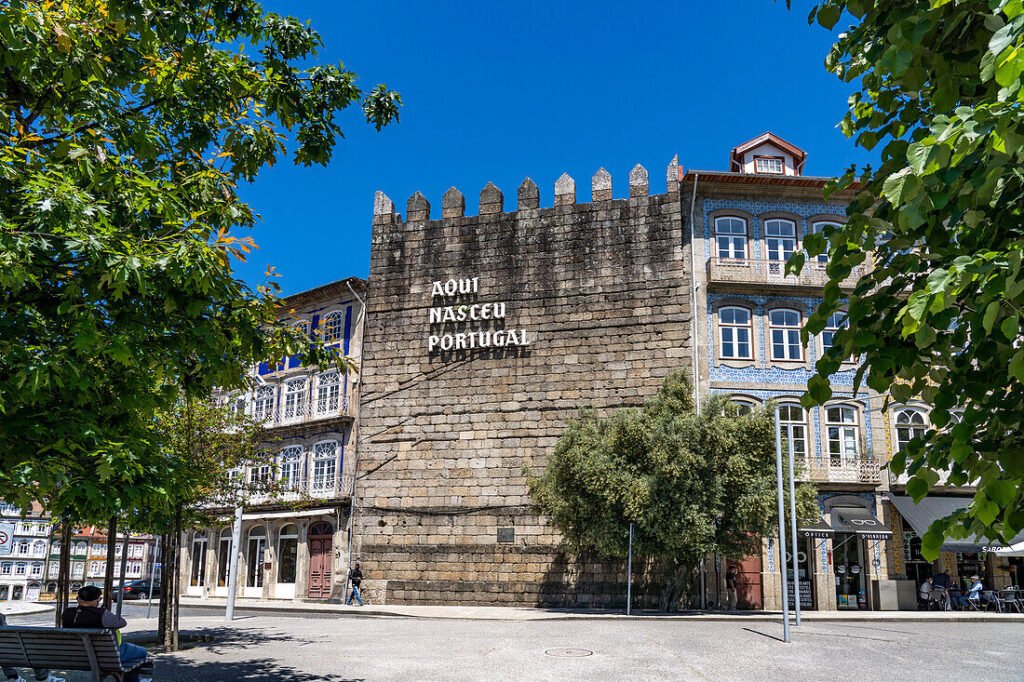

Guimarães is known to the Portuguese as the birthplace of Portugal. It was in the Guimarães Castle that Dom Alfonso Henriques, the first king of Portugal, was born.
The Guimarães Tower, with the inscription “Here Portugal was born” – the Customs Tower – was so named because it is located near the former customs office of Guimarães. After losing its defensive function, it began to be dismantled, but its most important part ultimately remained. In 1930, it was permanently unveiled, with added stones and battlements. In the 1940s, it began serving as a tourist reception area.
Largo Republica Do Brasil
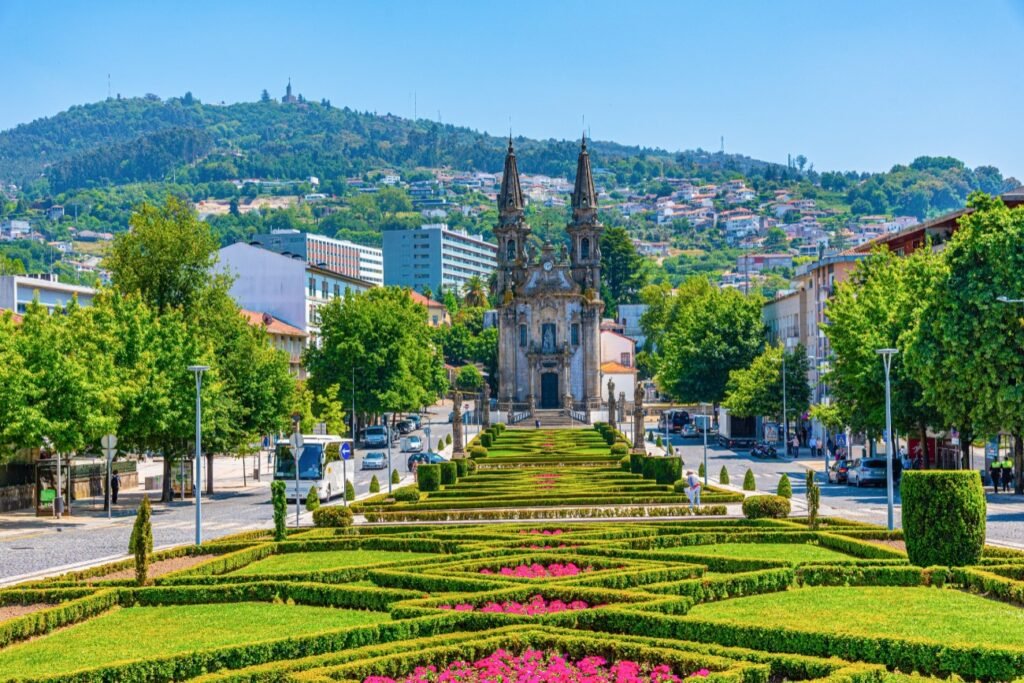
One of the most famous sites, attracting tourists from around the world, is Largo da República do Brasil. A beautiful avenue in the city, running between Alameda S. Damaso and Plaza Domingos S. Gonçalves, culminates in the monumental Church of San Gualter. At the other end is one of the Chapels of the Stairs of the Passion.
The central garden, with its shrubs and flowers, which extends all the way to the church, changes color with the seasons, always displaying seasonal blooms. San Gualter – This 13th-century church features a dazzlingly gilded and ornate Baroque interior, as well as a beautiful Renaissance cloister and 18th-century tiles.
Centro Internacional das Artes José de Guimarães
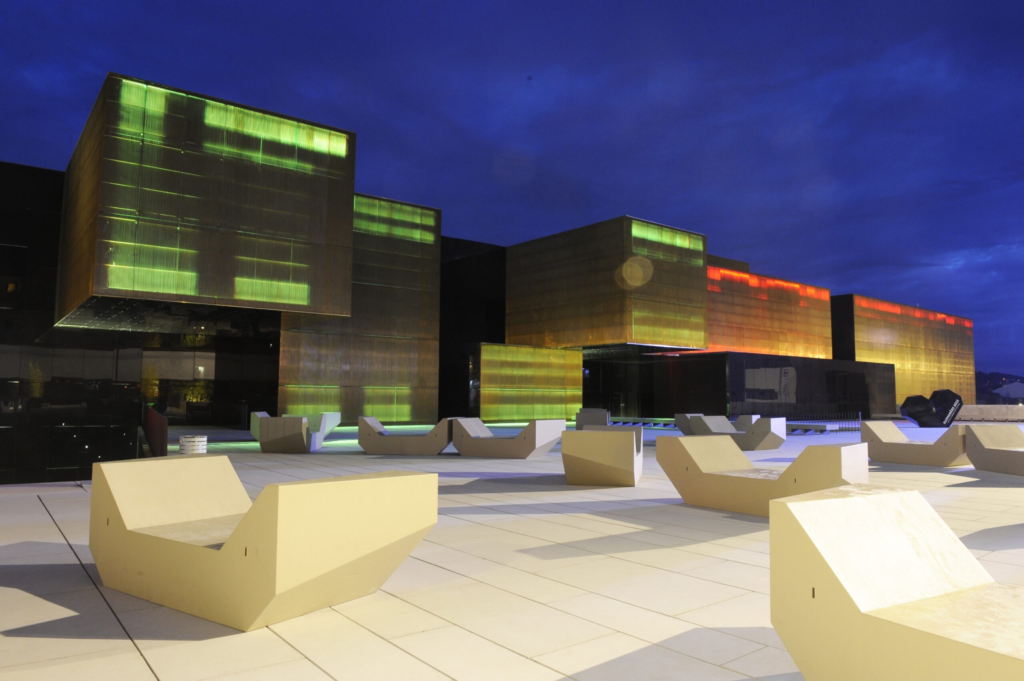
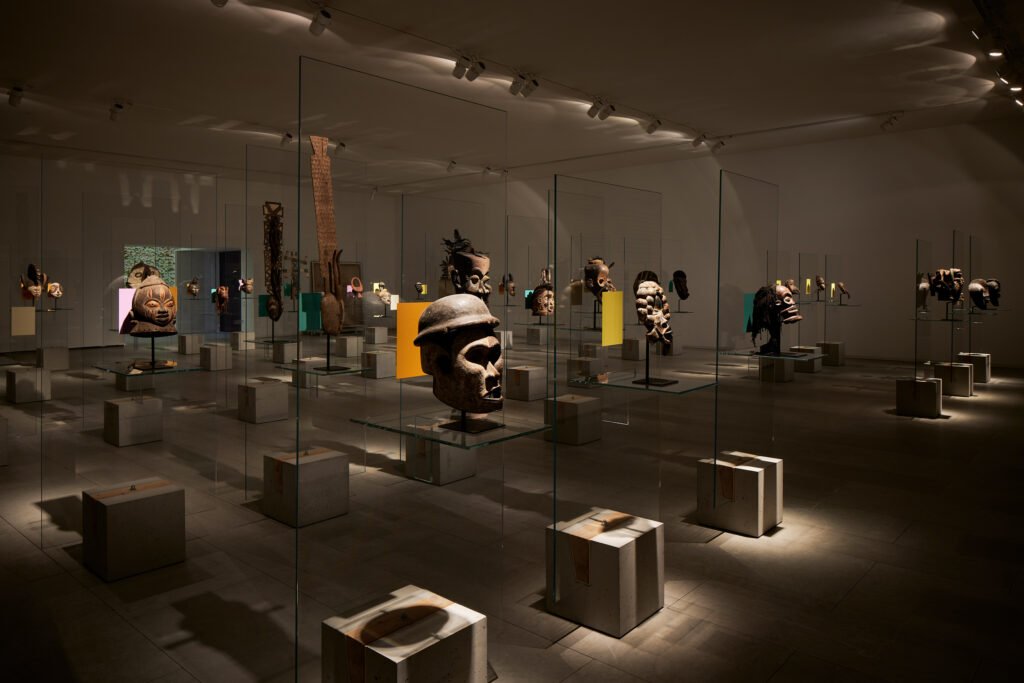
The CIAJG is a contemporary art center in Guimarães. The foundation of its cultural project is the collection of artist José de Guimarães, comprising African art, pre-Columbian art, ancient Chinese art, and a representative collection of his work. The José de Guimarães International Arts Center is virtually next door to the Archaeological Museum of the Martins Sarmento Society.
Centro Cultural Vila Flor (CCVF)
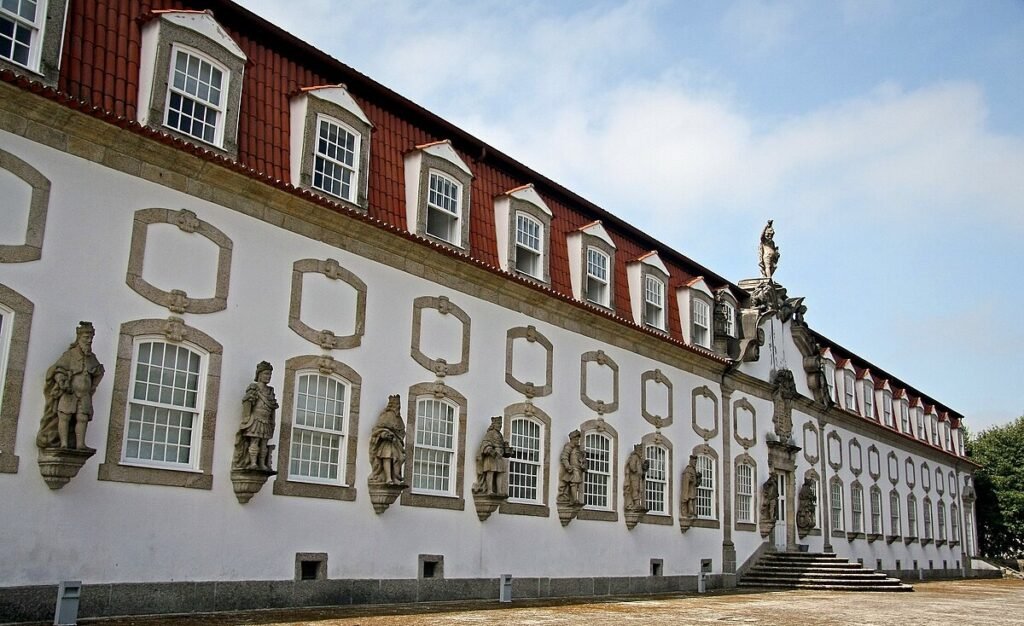
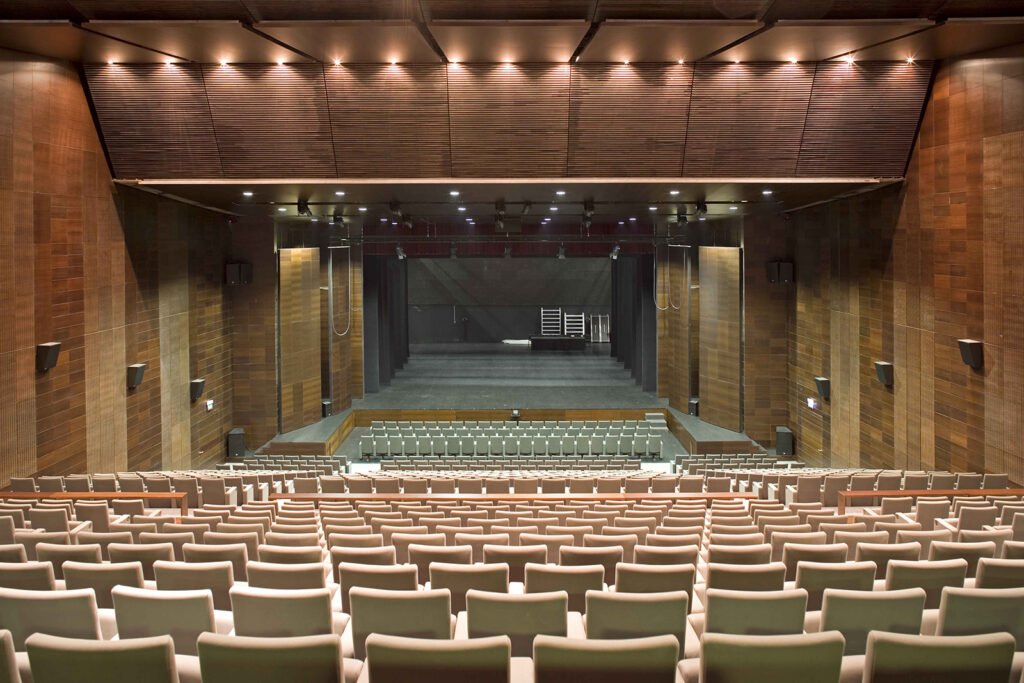
Vila Flor Cultural Center (CCVF) thanks to its multidisciplinary and diverse program, the Center continuously collaborates with various artistic disciplines, encompassing a wide range of aesthetic approaches. The Vila Flor Cultural Center has two auditoriums and hosts theater performances and concerts, ranging from classical music to contemporary rock and pop.
The Vila Flor Palace in Guimarães is an 18th-century palace with a garden located adjacent to the Vila Flor Cultural Center.
Museu de Alberto Sampaio
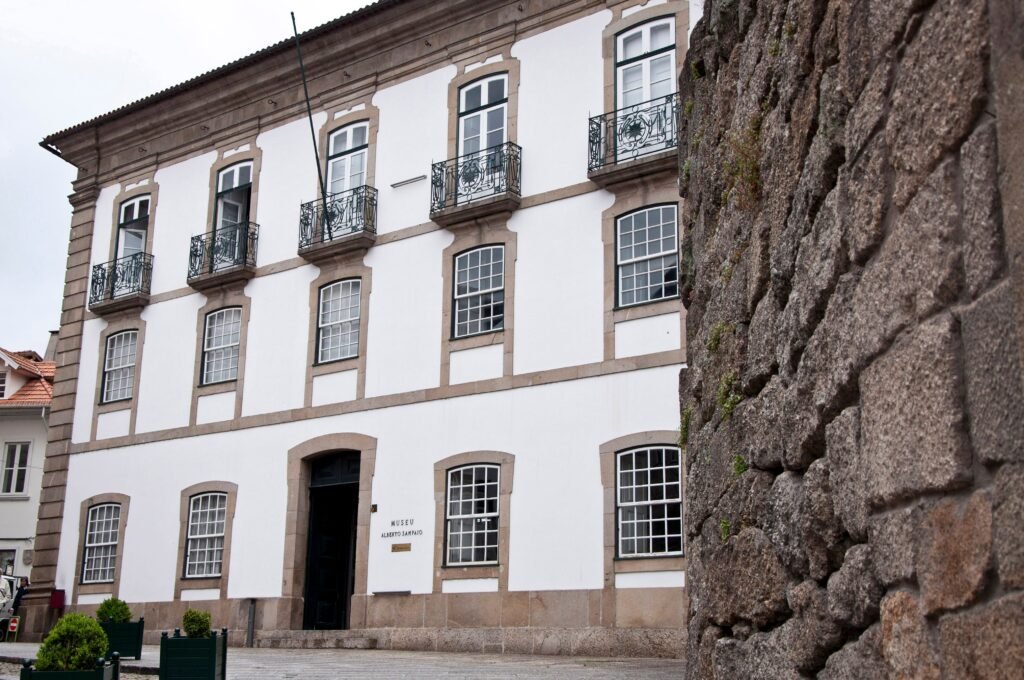
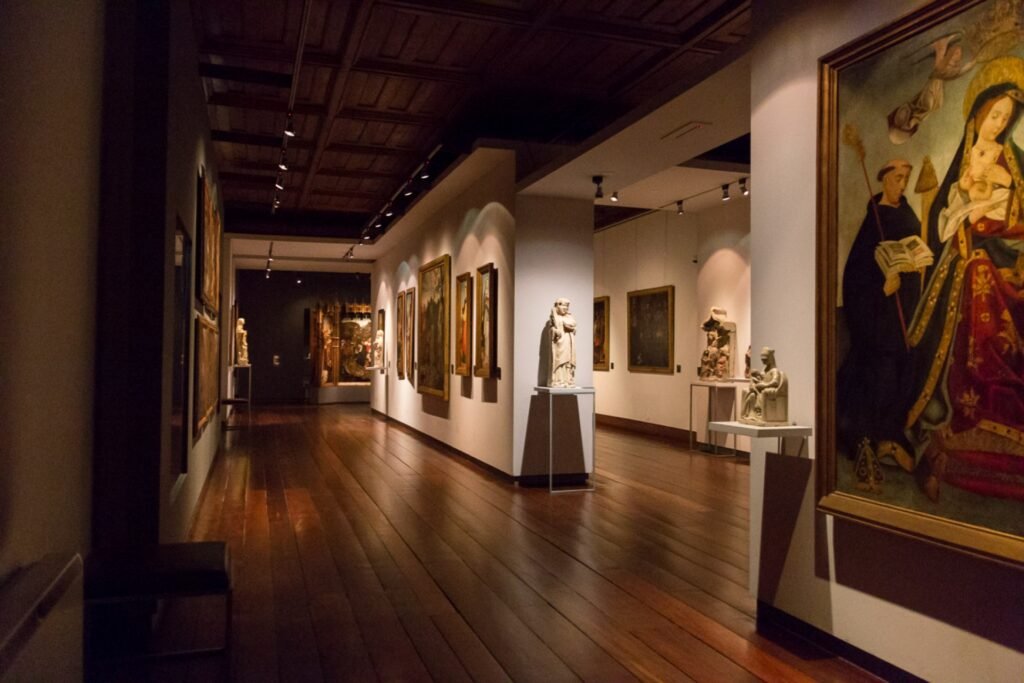
The Alberto Sampaio Museum is located in the heart of the city’s historic center. The museum occupies three spaces that once belonged to the Collegiate Church of Our Lady of Oliveira: the Chapter House, the Cloister, and the Priory House. The Cloister is unique in Portuguese architecture, both for its location around the church’s transept and for its irregular shape.
It houses collections of great interest, including sculptures featuring limestone and wood statues from the 13th to 18th centuries. The carved wood section features the 17th-century altarpiece that belonged to the Brotherhood of St. Peter and the Baroque flanks of the church of the Convent of Santa Clara. Paintings are represented by prominent frescoes and panel paintings. The ceramics collection includes examples of tilework and faience.
